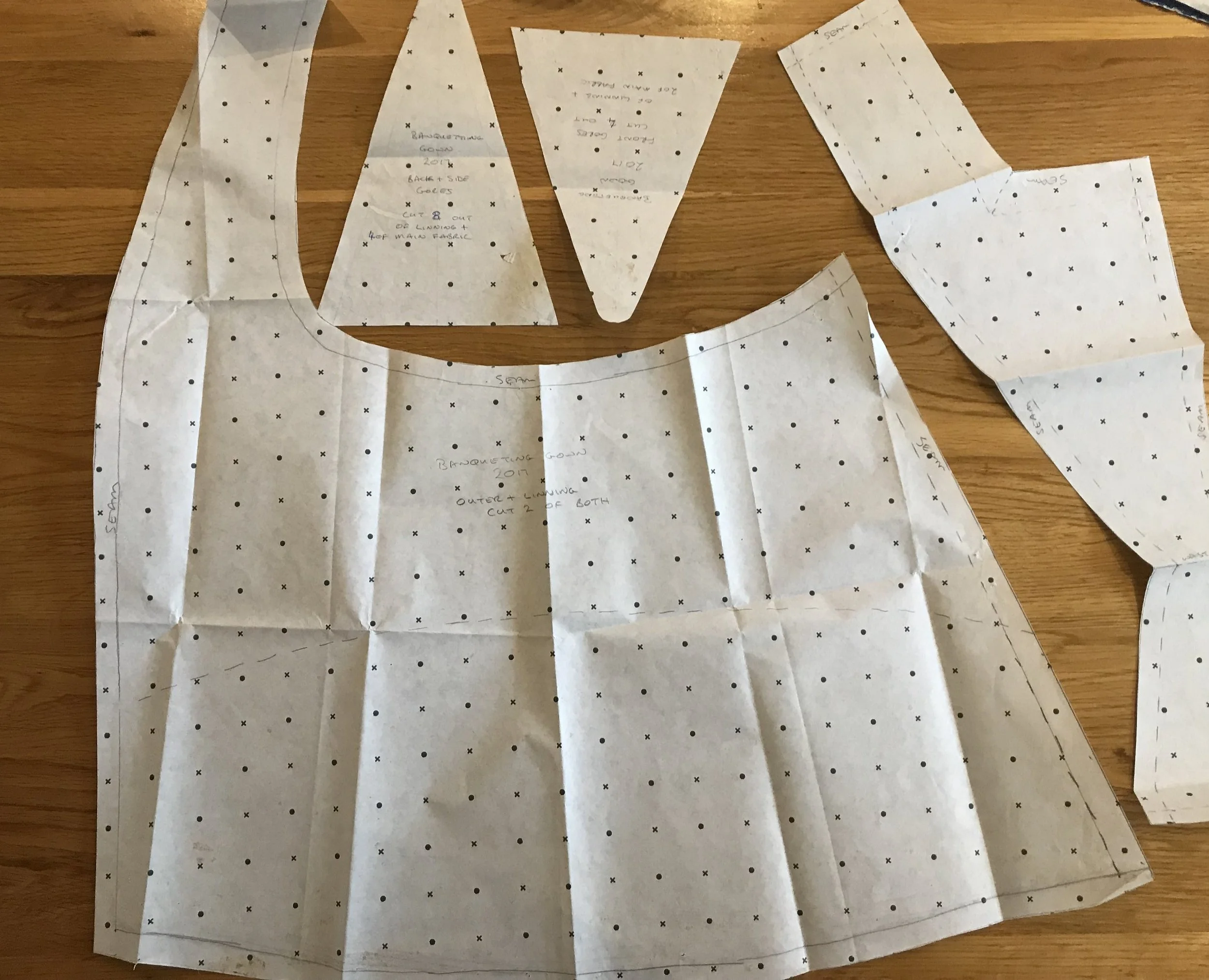Creating a Banqueting Gown Part V
/A birthday present that keeps on giving
It is nearly two years since I was presented with a 5m length of a lustrous garnet coloured satin silk. I had never owned such beautiful fabric and wanted to make it into something that would do the fabric justice. I hope you agree that I have achieved that.
The dress itself started to take shape in my mind after reviewing my copies of the Seventeenth Century Women’s Dress Patterns Vol 1 and 2. There is an article on a cream coloured silk bodice, all that is left of a full dress, with the classic wide sleeves of the 1630’s. That is a highly relevant period for me as my family and I have been re-enacting the English Civil War for many more years than the original war lasted!
The bodice in the pattern book, whilst it had very detailed fabrication instructions, was not complete and did not indicate what the other elements of a full outfit would be.
So began a period of searching for information about skirts, collars and cuffs, stomachers, bum rolls and so on. At the same time, I was searching for the materials to make these from.
I have had nearly two years of fun and pleasure form this project (interrupted by doing other things as well!) and I hope the dress will give many years of pleasure at banquets and feasts.
Collars and Cuffs
A major decision was the colour of the linen for shift, collar and cuffs. the options being white, off-white or yellow. There are several examples of bright yellow lace and linen being used and many paintings show aristocratic ladies with very white lace and linen.
In the end, I chose a cream colour purely because it set off the colour and sheen of the silk best and not for any authenticity reason - in fact I think it would have been considered a bit too off-white to be worthy of a such a fine dress.
The lace is modern polyester lace as I can’t afford this quantity of hand-made lace and don’t know how to make it myself.
I found a fantastic pattern of lace that I bought 3m of. That should be enough lace to sink a battleship. But no, it only just wrapped around the collar once it had been eased into the curve so it lies flat around that curved shape. Having run out, I found that it is not easy to find the same lace twice. In fact I did find the same pattern but only in gold lame!
So the lace of the cuffs and around the skirt hem is different but nothing can be perfect I believe.
Never mind the quality, what is the length?
A question often asked about gowns like this is is how much fabric is needed. I only had 5m (only!) to play with. It had been dyed to order so would be hard to get more. So I had to stay within 5m. In the end, the scraps left over could be scrunched up in one hand!! It is amazing how efficient you can be when you concentrate.
However, the skirt has very little hem length and I am only 5’2” tall. Had I been even 5’4” tall, there would not have been enough for the dress. Based on that, I would recommend 6m for a dress with the wide sleeves of 1630’s. Such sleeves were, after all, an expression of the wealth of the owner - so much expensive fabric tied up in a sleeve.
What is next?
This is the last post on making my dress - now I get to wear and enjoy it!. However, my dress making will continue as I have started a small part-time business making historically accurate costumes for customers. You can find details on the website this blog is posted on.
In the next post I will review some of the books and sources used for this project and recommend them for different aspects of costume making.
I hope you have enjoyed this series of posts and will continue to read my blog as the topics change.




